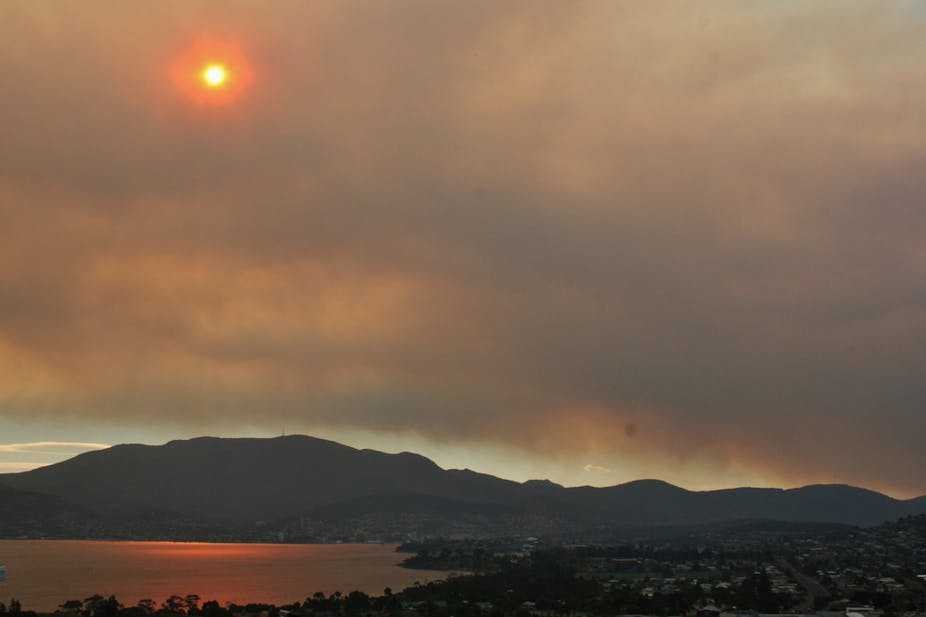Daylight hours are dwindling and our first month of autumn is ending. But in many places, March felt a lot like summer. Get used to it: looking ahead, all indications are that future summers could be just like this one, or more extreme.
Southeast Australia welcomed autumn with a persistent heat wave. For the first 12 days of autumn, temperatures were 6.9 degrees above normal across Tasmania and 6.8 degrees above normal in Victoria.
Melbourne’s March record-breaking weather included nine days of temperatures of 32 degrees or above and its hottest overnight March temperature in 110 years of record keeping. Adelaide experienced ten such hot days.
The unusually warm autumn weather was part of a much larger and much longer warm spell. The last six months have been characterised by sequences of heat waves and record temperatures across the entire Australian region.
Summer was the hottest on record across all of Australia. In January, Australia had its hottest month on record. The hottest day ever recorded for the entire continent occurred on January 7.
The surrounding oceans, from the Great Australian Bight through Bass Strait, also broke previous extreme temperature records. These waters exhibited the hottest sea surface temperatures on record in February.
Our exceptionally hot summer cannot be discussed simply as a catalogue of interesting record-breaking events. This summer was not normal. And we can’t talk about the exceptionally hot summer and early autumn without talking about climate change.
Australian average temperatures have increased faster than the global average increase (0.8°C) and are now 0.9 degrees warmer than a century ago.
It may not sound like much, but research shows that changes in average temperatures (even less than 1°C) can lead to huge changes in the frequency and severity of extreme climate events.
This is exactly what Australia just experienced with this sequence of heat waves, extending from November 2012 to March 2013.
Our recent research in the internationally peer-reviewed Journal of Climate shows that there has been a significant increase in the number of heat wave days for most of the country from 1951-2008. The paper describes heat waves as a period of three or more days where temperatures are excessively hot – in the top five to 10% of temperatures recorded.
This trend is greatest in eastern Australia, where both the number of heat waves and their duration has increased.
Recently, we extended the time period of the analyses to include the period from 1911 to 2011. Not surprisingly, our initial results suggest that heat waves are now occurring earlier than 100 years ago. In some places, the first heat wave of the season is occurring almost a month earlier.
Recent studies from other parts of the world have shown that many, if not most, of the recent record-breaking heat waves and extremely warm summers would have been unlikely to occur without human influence on climate change.
Although we can never say categorically whether an individual climate event, such as a heat wave, would have occurred without human-related greenhouse gas emissions, it is possible to assess how global warming has changed the likelihood of extreme events occurring.
Working with other climate scientists we investigated the probability of extreme summer heat occurring across Australia using a suite of climate model simulations representing current climate conditions. We then used a parallel suite of control experiments, in which greenhouse gases from human activities were entirely absent.
Previous studies using similar methods have found strong human contributions to the severity of extreme summer temperatures. James Hansen and other NASA scientists found a 10-fold increase in areas experiencing extremely hot summers due to global warming. Similarly, climate scientist Gareth Jones and his colleagues at the UK Met Office Hadley Centre found a dominant human influence on rapidly increasing hot summers in the Northern Hemisphere.
When we ran our hot, angry summer through a large group of the latest generation of climate models it became clear that there was likely to have been a substantial human influence on our recent extreme summer heat. Our early results indicate that anthropogenic climate change more than tripled the risk of Australia’s extremely hot summer occurring.
As for the future, it is now virtually certain that the frequency and severity of hot days will increase. Extremely hot seasons will worsen, with the biggest impacts of climate change being felt by Australians in summer. Spring weather will come earlier, and autumn later.
Additional global warming over the next 50 years, under a business-as-usual fossil fuel emissions scenario, is expected to see global average temperatures increase by at least 1°C. Such a change means that our recent summer on steroids will become the norm and far worse summers will occur with greater frequency.
We already know what is causing the changes we see now. Clearly, it is time to stop talking about record-breaking heat as isolated incidents and recognise them in the context of climate change.
It’s time to start preparing for more angry summers, more frequently.

